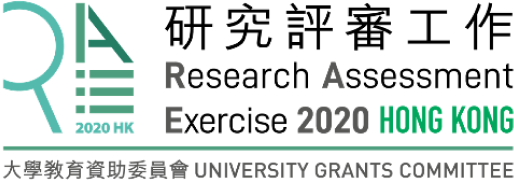Unit of Assessment:
Case Study
Lightweight building systems for quake area and developing region
1. Summary of the impact
In quake areas and developing regions that face severe challenges due to underprovided public facility, insufficient resources and economic inequality, there is a pressing need for lightweight building systems that provide affordable and safe buildings. The research team has invented 6 advanced building systems to address this need. The systems had been implemented successfully in many applications, including school playroom, exhibition room, nature reserve work station, office, resort, and hostel. The social impact of the project is felt among numerous users and partners of the research investors, government departments, NGOs, commercial organizations, manufacturers, contractors, communities, and interest groups. As an example, the Checkered Playroom, a product developed from the research, is a pre-school facility in rural areas. Thus far, Checkered Playroom has benefitted approximately 20,970 children and 350 teachers across 13 provinces in China. The total number of beneficiaries of this research has exceeded 40,000 people.
2. Underpinning research
The research, which is led by Professor Zhu Jingxiang and his team since 2010, comprises three aspects: structural innovation, lightweight building system invention, and product development. Though construction is going on an unprecedented pace across Asia, there is little attention to building integration or system invention — a possible way to accommodate pressing needs in both Asian cities and rural areas [3.3]. Consequently, existing buildings in these areas often suffer from lack of flexibility, low sustainability, dragged efficiency, no possibility of reuse and irreversible damage to the subsoil after demolishment.
Based on the Total Design philosophy and Agile Movement principles [3.6], Zhu works closely and creatively with industrial partners [3.4] to break the chain of research, development, design and application into eight stages: reality observation, information extraction, variation identification, mock-up testing, product development, project realisation, and mass application [3.1]. This innovative approach enables the development of a system from ground up, and generation of diversified building systems that yield lightweight architectural prototypes that guarantee efficiency, affordability, and quality. Most importantly, these prototypes can be adapted to various real-life complex scenarios, and particularly applicable in quake areas and developing regions [3.2].
The team has developed 6 systems: New Bud Composite System (2009-2015), Spatial Panel System (2015-2018), Modular Frame Construction System (2013-2016), Z-Panel System (2013-2015), Modular Frame System (2018), and Agile Construction System with slender steel tube (2018). The architectural products developed through this project have received various national and international awards, such as the FuturArc Green Leadership Award (2016), CIC Construction Innovation Award (2015 & 2017), Far Eastern Architectural Design Award (2017), China Architecture Media Awards (2016), and WA Awards for Chinese Architecture (2014, 2016, & 2018).
Impact Pathways. During the assessment period, the project has attracted strong partnerships from multiple parties [3.5], including (1) 10 companies (e.g., China Construction First Building (Group) Co., Ltd.; Shenzhen Tagen Real Estate Development Industrial Co., Ltd.); (2) 9 government organizations in China and overseas countries (e.g., Embassy of the People’s Republic of China in the Republic of Kenya; Urban Planning State Land & Resources Commission of Shenzhen City (Futian District Administration Bureau); (3) business organizations (e.g., AkzoNobel Ltd.); (4) 6 non-governmental organizations and donors in Hong Kong, China, and other countries (e.g., Bangladesh social entrepreneur); (5) Nobel Peace Prize winner Muhammad Yunus; and (6) over 80 manufacturers (e.g., Xiping Jiahe Modular House Co., Ltd., Sichuan Mind Wooden Construction Engineering).
During the assessment period, the project has been featured across multiple media platforms, including Shenzhen TV Station City Channel (approx. 100K views), Arc'teryx promotion film (approx. 11K views), Puxiang Wechat post (approx. 30K views), and Luminosity Wechat post (approx. 7,150 views), and various other social media posts with at least over 4,000 views. The project has also been reported in Hong Kong and China newspapers, including Wen Wei Po, Sing Tao Daily, Ming Pao, Lion Rock Daily, Hong Kong Headline Daily, Ta Kung Pao, and China News Service, with average reach ranges from approx. 150K to over 820K views.
3. References to the research
[3.2] Zhu, J. X. (2015). Possibilities of light-weight building systems. Time+Architecture, 31(2), issue 142, 59-63. doi: 10.13717/j.cnki.ta.2015.02.012
[3.3] Zhu, J. X. (2018). Constructing critically Prefabricated Systems with soul. Architectural Design, 88(6), 40-45. doi: 10.1002/ad.2363
[3.4] Zhu, J. X. (2016). New bud building system. Architecture and Urbanism, 64(6), 128-131.
4. Details of the impact
The team’s research has inspired record breaking architectural projects that had provided a large population with efficient, sustainable, and affordable built environments. Some of these architectural projects are the Grameen Bank Lukou Office (New Bud Composite System) — a 220 sqm Building completed within just 8 weeks from design to construction; the New Lawuga School (Z-Panel System) — a village school built on plateau 4,000 m above sea level; the MCEDO Beijing School (Modular Frame Construction System) — a school built in Kenya.
The two examples presented below help to illustrate the social and economic impact of successful implementation of the building systems in rural and rapidly urbanized China.
Checkered Playroom in Spatial Panel System (2015-2018). Rural areas in China experience shrinking population and insufficient educational resources; catastrophic life loss during Sichuan earthquake proved that many official school buildings are vulnerable to natural disasters. NGOs often lack the hardware to sustain long-term and quantitative impact of their interventions. Checkered Playroom, a part of the Sunshine Checkered Playroom project, is an architectural product developed jointly with Beijing Western Sunshine Rural Development Foundation (an NGO). Over 100 schools had benefitted after the first installation of the spatial panel system in the preschool playrooms in Huining Shequ Village, Gansu. The building provided stimulating and safe study environment, while the NGO supported sustainable educational services through its teaching facilities, teacher’s training and parenting activity [5.1]. According to Wang Lihui, the Secretary General of Beijing Western Sunshine Rural Development Foundation, the Checkered Playroom “promotes growth and development”. The project had attracted investments from national and international companies, such as Trendy Group, Changan Ford Automobile Co., Ltd., Agile Group, and The Hong Kong and Shanghai Banking Co., Ltd. (China) [5.6]. The total funding had reached RMB 24.6 million, with over 5% annual growth.
Xiping Jiahe Modular House Co., Ltd. is an important partner responsible for manufacturing and constructing the Checkered Playroom. To assure the quality of every Checkered Playroom despite the mounting demand for it, once the factory had acquired the building technology and methodology of the product through the research team’s systematic knowledge transfer activities, it quickly established a specialized flow fabrication line. The total income of the factory since the first Checkered Playroom was built had reached RMB 24 million [5.2].
Agile Construction System formed with slender steel tube (2018). Rapid urbanization in China has created a demand for building technology that allows quick and efficient urban renewal in the country.
The Agile Construction System formed with slender steel tube, the first formal lightweight prefabricated campus for urban renewal programme in China, was invented and implemented at the Shenzhen Meili Primary School transition campus in 2018 [5.5]. This project was an outcome of coordinated efforts of 7 governmental departments and bureaus, 10 organisations from various industries and the parents. According to Yang Qin, the principal of Shenzhen Meili Primary School, the project not only provided “physically and mentally healthy environment” for 1,700 students and teachers within a couple of months, but it also “elevates the entire community as a whole”. More importantly, it “gives the school endless pride and dignity” [5.3]. Compared to the construction of a conventional school in Hong Kong, the construction of the transition campus was 84% faster, 86% lighter and 88% cheaper per square meter. Its lightweight and rapid construction technology provided a substantial amount of usable floor area within a short period of time. When necessary, the building could be demolished without damaging the subsoil or generating construction waste.
The contract with the Meili Primary School transition campus was worth RMB 30 million. Due to the reusability of the building system, the campus could be disassembled and reassembled at least 5 times. First time construction accounted for around 80% of total cost, and the cost for every reassembly was substantially lower. According to Arup Engineering’s assessment report: “The modular prefabrication system, which can be repeatedly disassembled and was applied first time in Meili school, is very unique in whole China... The integration degree of prefabricated steel structure and school program has reached a very high level, and the team has provided a smart solution for resisting earthquake and strong wind, which is critical for a multi-story prefabrication system... The steel joint is very novel,... manufacturing is extremely efficient,... it is an excellent case of multi-story prefabrication structure”. [5.8]
The transition campus has inspired reforms in China’s administration, building, and pricing because the transition campus falls outside all conventional building categories of the existing policy framework [5.4][5.9][5.10]. As Yang Hong, Chair of the Standing Committee of the Shenzhen Municipal Committee, puts it, the transition campus project has motivated the need to “reform existing approval procedure, technological innovation, and business model”. The Urban Planning, State Land & Resources Commission of Shenzhen City has invited Zhu’s research to draft the guidelines for lightweight prefabricated construction.
Opportunities for future application of the agile construction system abound. The Longhua Educational Bureau has invited Zhu’s team to build transitional campuses. A school of 5,200 sqm with 28 classrooms and another one of 5,900 sqm and 30 classrooms will be completed by the end of 2019. The team was also commissioned to finish two transition campuses of similar sizes in the Lo Wu District within half a year. About 5,600 students and teachers will enjoy these state-of-art campuses when these projects are completed.
The research has also created significant economic impact. The initial investment in the mock-up unit was RMB 200,000. The value of each contract was around RMB 30 million. The annual revenue generated by the Agile Construction System amounted to RMB 120 million.
5. Sources to corroborate the impact
[5.1] Testimonial letter from Beijing Western Sunshine Rural Development Foundation
[5.2] Testimonial letter from Xiping Jiahe Modular House Co., Ltd.
[5.3] Testimonial letter from Shenzhen Meili Primary School
[5.4] Professional assessment conference (Meili Primary School transition campus), Jan. 2019
[5.5] Shenzhen TV Station City Channel (Meili Primary School transition campus), Sep. 2018
[5.6] Arc'teryx promotion film, Nov. 2018
[5.7] Social media report (website) — Designboom magazine (Italy Venice Dou Pavilion), Jun. 2016
[5.8] Professional assessment on structural innovation from Oval Arup (2018-12-05)
[5.9] Newspaper — Ming Pao, Nov. 2016
[5.10] Online newspaper — Hong Kong Headline Daily, Jan. 2019

